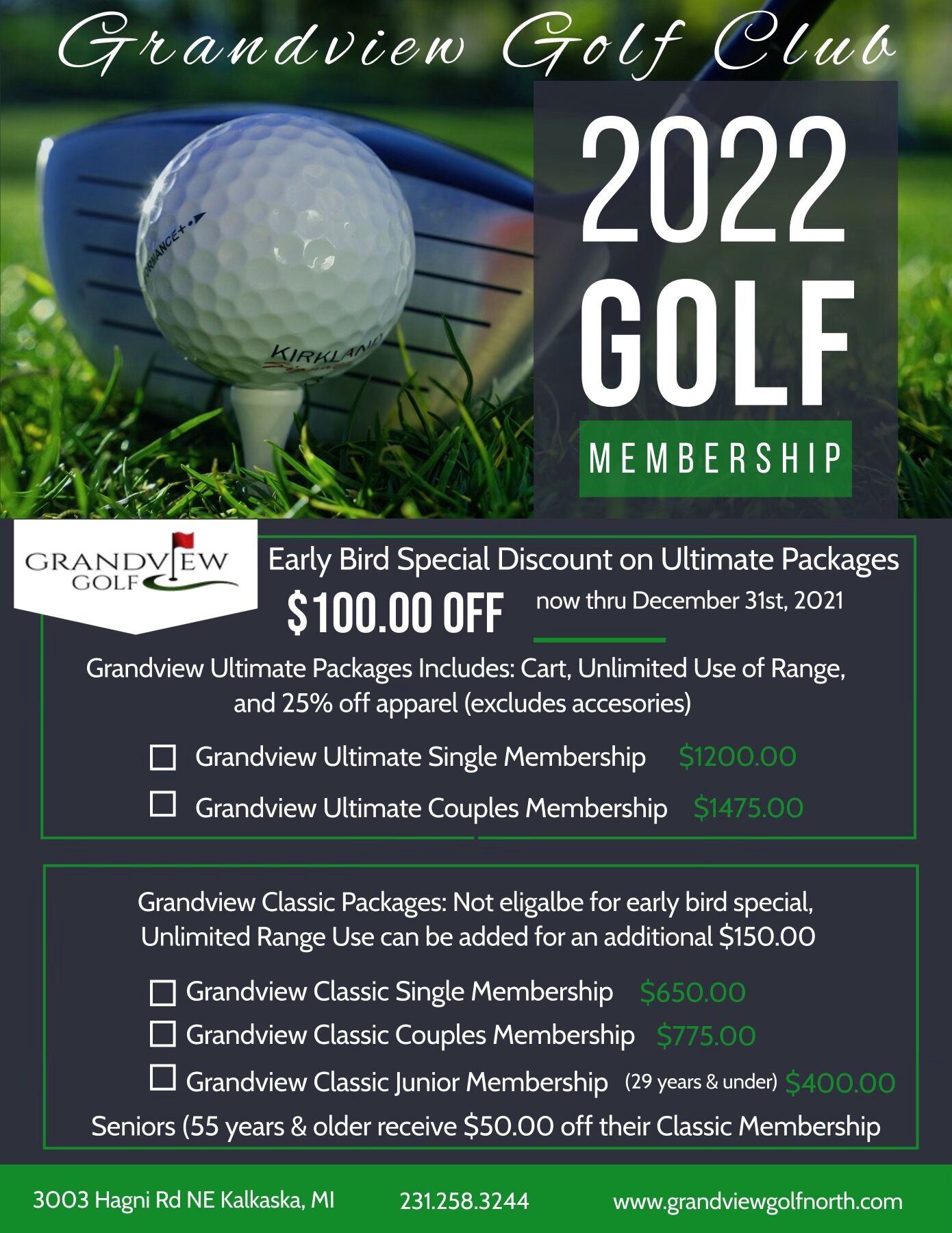1.2 Marketing for the Golf Industry
The Industry of Golf
In 2019, the National Golf Course Owners Association Canada (NGCOA) shared that 150,000 new golfers and 57 million rounds of golf were played in Canada, signifying the most significant increase since the Tiger Wood’s influence of the early 2000’s (Golf Course Industry Staff, 2020). Golf is the most popular sport in Canada by participation, with an estimated 6 million people taking up the game in 2020 and an increase to 63 million rounds played or 14 rounds average per golfer (Golf Canada, 2020). The golf industry is worth more than $18.2 billion annually to the Canadian economy and is steadily growing (Golf Course Industry Staff, 2020).
New technology, such as golf simulators, online gaming, international betting, fashion trends, media coverage, social media, and official rules of golf revisions intended to make the game more enjoyable, have provided fresh marketing opportunities for the industry. Obstacles to golf participation, such as affordability, time consumption, difficulty learning, and seasonality, are continually being overcome to attract more people to golf and create growth for the industry.
Golf is an international game; after all, we have the Dutch and Scottish to thank for introducing what we now call golf. The same marketing trends that have swept the business world are making their way into the golf industry: the global shift, increasing participation of minority groups, urbanization, environmental sustainability, digital technology, and corporate sponsorship have turned the game into a vehicle for profit and growth.
The Country Club

A private country club is a membership organization for golf, recreation and social activities. Clubs often boast expansive facilities with top-rate golf courses, dining options, pro shops and more. Some organizations bill themselves as country clubs. Others refer to themselves as golf clubs. Is there a difference? Although the terms are essentially interchangeable, as a general rule, a golf club’s main focus is golf, while a country club offers a broader range of programs or facilities.
Private membership can carry a high price tag and high expectations for member engagement, social atmosphere, and services offered by the club. The investment of membership for an individual or family becomes an extension of their home as many country clubs have an exclusive atmosphere, high-end facilities, food and beverage, and private functions for members, guests, and clients.
Marketing at a country club serves many purposes: as a communication tool, for promotional opportunities, for revenue generation, for club atmosphere, and for honouring tradition. Private clubs can be non-profit (member-owned shares) or for-profit (owned by an individual, corporation, or group). Golf club memberships can be equity or non-equity-owned.
Public Golf Facilities
Public golf courses are open to the public and do not require a membership to book a tee time or use the facilities. Public facilities are owned by individuals, buying groups, and corporations and rely heavily on daily traffic, greens fees, food and beverage sales, and events such as weddings for annual revenues and operating budgets. Many public golf courses offer dynamic pricing such as peak times, twilight, 9-holes, 18-holes, junior, intermediate, senior, and more to attract different demographics and target audiences. Online booking, point of sale, on-course, golf cart, social media, and email campaigns are popular and effective ways to communicate with guests and create revenue.
To increase traffic generation at a public facility, many public courses offer rewards and loyalty programs such as golf and F&B packages, custom annual green fee packages, branded merchandise, leagues, contests, pro shop promotions, sponsorship opportunities, and more. Custom annual memberships (green fees) create value and are priced dynamically to the individual’s personal needs, such as how often they golf, use of a cart, F&B requirements, locker services, corporate affiliation, local residents, etc.


Practice Facilities
Practice facilities offer an alternative to playing golf on a golf course, including driving ranges, short-game facilities, mini-golf, simulators, and gyms. These facilities are often the first opportunity for people to swing a club and their first practical exposure to golf.
Golf is more than a sport; it’s an activity, a social connection, a gathering, an occasion, exciting and fun.
Municipal Facilities
Municipal facilities owned by the local municipal government, paid for by the taxpayers, are open to the public and are often the most cost-effective option to play the game; some courses even offer golf for free! Typically, municipal golf courses provide annual membership options and golf packages, pay-as-you-play daily fee options, tournaments, and practice facilities throughout the golf season. Revenue sources from municipal facilities include daily green fees, tournaments, golf shop sales, golf camps, golf carts, and food and beverage (often contracted to a third party).
Municipalities play a significant role in youth golf development as many junior golfers do not grow up as private club members and seek municipal courses to learn and play. Junior golf camps, lessons, and tournaments are key to sustaining a life-long interest in golf. Government grants, bursaries, and initiatives through Golf Canada for long-term player development rely on municipal golf courses and professional staff to facilitate growth opportunities.
For convenience and affordable access, many city-owned golf courses are on public transit routes to offer safe and affordable access for all ages and abilities. In London, ON, Fanshawe Golf Course has 36 holes of championship and nine holes of executive golf. The Parkside 9 is the first in Canada to be fully accessible to physically challenged golfers and offers engagement for the entire family to learn and enjoy the game. There is no charge to play as a municipal golf course; golfers can use it on a first-come, first-serve basis. Golf courses | City of London
Golf Simulators
If you watch golf on TV, you’ve undoubtedly seen players on the range, hitting a shot and then looking down at what appears to be an iPad. No, they’re not checking their email or Facetiming their friends. They check their club path, spin rate, club head speed, launch angle, carry and total distance, smash factor and much more on a launch monitor. And, more than likely, they have a full golf simulator at home.

What’s the Difference?
“The best way I can describe it is that the launch monitor is the engine, and the simulator is the entire car.” — Aaron Hardy of Foresight Sports Canada (Foresight Sports, 2023).
Hardy is the exclusive Canadian distributor of Foresight, a product used by more than 170 PGA TOUR pros. TrackMan and SkyTrak are other popular products golfers and instructors use worldwide, among other reputable brands. While a monitor is portable, a simulator is a permanent or semi-permanent installation that may include some or all of the following: a monitor, net or screen, hitting mat, laptop computer, projector and, of course, a suitable indoor space. You can virtually play some of the world’s most famous courses. Foresight even offers a “Canadian course mega-deal” software package that bundles Glen Abbey Golf Club, Essex Golf and Country Club and Cobble Beach Golf Links.
Do you need a launch monitor and a simulator?
Golf simulators have revolutionized how golf enthusiasts experience and engage with the sport, offering many benefits that extend far beyond the traditional greens. Whether driven by adverse weather conditions, time constraints, or a desire for continuous improvement, golfers are increasingly turning to these high-tech setups. In this exploration, we delve into the myriad advantages of utilizing a golf simulator, from weather-independent play to the unparalleled opportunity for year-round practice and entertainment.
Ten key points that underscore the significance of incorporating a golf simulator into one’s golfing lifestyle:
- Weather Doesn’t Matter:
- Golf simulators provide the flexibility to play and practice regardless of weather conditions. Whether it’s raining, snowing, or too hot outside, golf enthusiasts can still enjoy the game within the comfort of their own home or indoor facility.
- Game Improvement 24/7:
- With a golf simulator, players have the opportunity to work on their game at any time of day or night. This accessibility enables consistent practice, leading to improved skills and overall performance. Players can focus on specific aspects of their game, such as putting, driving, or iron play, without limitations imposed by traditional outdoor constraints.
- Entertainment 365 Days A Year:
- Beyond practice, golf simulators offer a wide range of entertainment options. Users can play virtual rounds with friends, participate in online tournaments, or even engage in mini-games and challenges. This constant availability enhances the overall enjoyment of the sport.
- Course Selection – Unlimited Options:
- Golf simulators typically come with a vast library of virtual courses from around the world. This allows players to experience different terrains, challenges, and designs without leaving their location. The variety adds an exciting dimension to the game, offering a virtual golfing tour from the convenience of one’s home.
- Play in a 1/4 of the Time:
- Unlike traditional golf rounds, which can take several hours, using a simulator allows players to complete a round much more quickly. This time efficiency is appealing to individuals with busy schedules who still want to enjoy a full golfing experience in a fraction of the time.
- Quality Data and Feedback:
- Golf simulators provide detailed data and analytics on each swing, including club speed, ball speed, launch angle, and spin rate. This information is invaluable for players looking to refine their technique, identify weaknesses, and track their progress over time.
- Easy To Record Your Swing:
- Most golf simulators come equipped with recording capabilities, allowing players to analyze their swings in real time or review them later. This feature facilitates self-correction and provides a visual reference for understanding and refining the mechanics of one’s golf swing.
- Affordable – Cost Per Round is Incredible:
- While the initial investment in a golf simulator might seem significant, the long-term cost per round is often much lower than traditional golfing expenses. Players save money on green fees, travel, and other associated costs, making it a cost-effective alternative in the long run.
- Stay Sharp Year Round:
- Golf simulators enable players to maintain their skills and stay in golfing shape throughout the entire year. This consistency helps prevent skill degradation during off-seasons, ensuring that players can return to the course at their best when outdoor conditions permit.
- Become An Elite Ball Striker:
- The continuous feedback, practice opportunities, and detailed performance metrics provided by golf simulators contribute to the development of elite ball-striking skills. Players who consistently use simulators have the potential to refine their technique, leading to more accurate and powerful shots on the golf course.
- (Cero Golf, 2024)
Golf on TV
According to Ed Desser, a sports media consultant and rights expert, “media rights are important in two fundamental ways; first and foremost, it’s the way the vast majority of consumers experience the sport. So, that’s at the top of the pyramid. Secondarily, it’s one of the largest revenue streams that any sport generates” (Colgan, 2022).
Golf Gambling
This latest surge in legal sports betting dates to 2018, when the U.S. Supreme Court overturned the Professional and Amateur Sports Protection Act of 1992. Since 2018, 21 states and D.C. have joined Nevada in permitting legal sports betting. Gamblers legally bet more than $13 billion on sports in 2019, up from $6.6 billion in 2018.
Golf still represents just a tiny sliver of that pie. It accounted for about 1 percent of all legal sports betting in 2019, or roughly $150 million in wagers. But betting companies, known as sportsbooks, are bullish on its growth potential. “We always treated golf like NASCAR or auto racing—somewhat ancillary sports,” says Jeff Sherman, vice president of risk management and an oddsmaker at Las Vegas-based Superbook USA. “Lately, golf has accelerated past NASCAR. It’ll never touch betting interest in major sports and college football and basketball, but it’s right behind it. People love to bet a little to win a lot, and that’s exactly what golf offers with so many different golfers, often at high odds.” (Hennessey, n.d.)
Key Takeaways
The game of golf is growing in popularity and economic value. The industry growth has provided marketing opportunities with new demographics. The country club is a social environment designed to provide familiar comfort and community.

